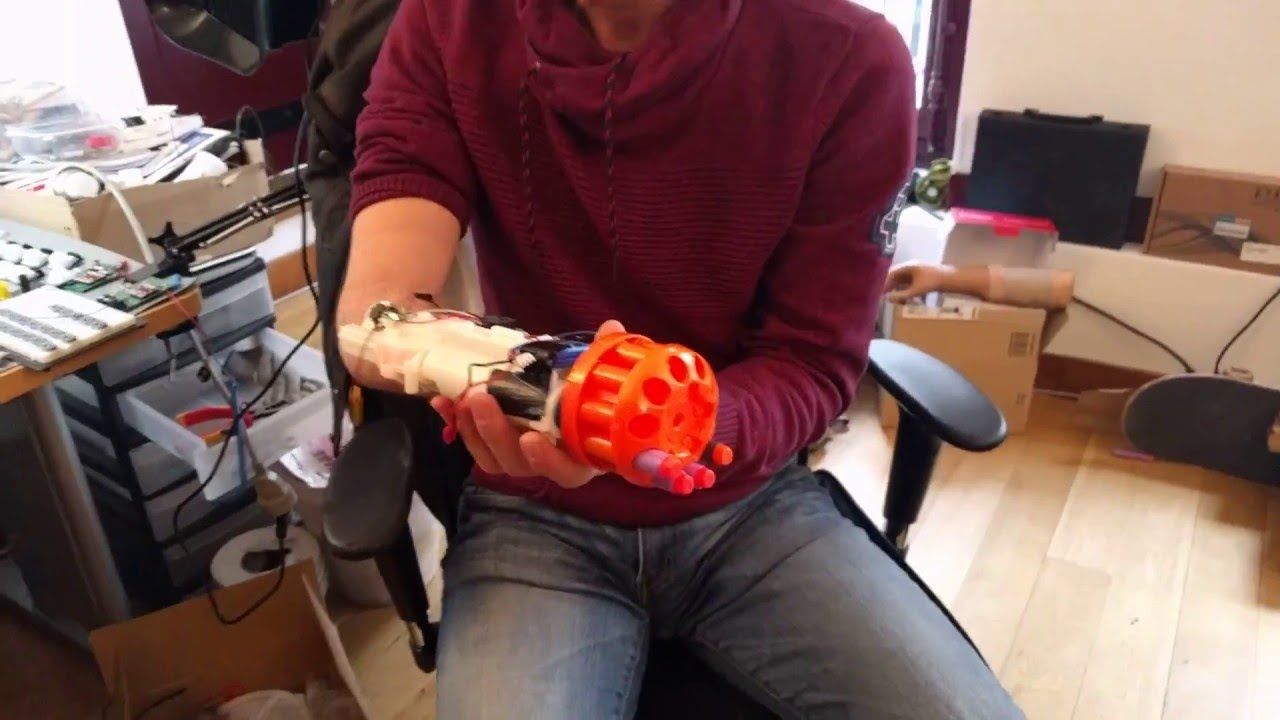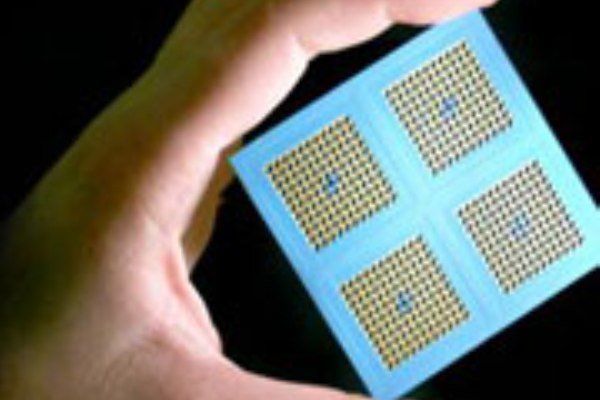Page 10325
Jan 8, 2017
Light-activated neurons hold bright promise for brain science
Posted by Karen Hurst in categories: genetics, neuroscience, science
As I stated earlier, another example where we will see a convergence of tech and bio especially as we emerge QC forward and synbio technology such as gene/ cell circuitry. My guess when we mature these fields along with minerals like diamonds/ gem crystalized formation and their use in QC tech, we will began to wonder why we didn’t figure this out sooner.
When Edward Boyden was helping develop a tool to turn neurons on and off with light at Stanford a decade ago, he had a strong feeling it would spread far and wide. Even so, he’s been surprised by how quickly its fame has come.
“What I hadn’t quite anticipated was how fast it would take off,” said Boyden, who now leads the MIT Media Lab’s synthetic neurobiology research group. “It was almost as if the field was ready for the technology.”
Continue reading “Light-activated neurons hold bright promise for brain science” »
Excellent read for the new year.
We’re all familiar with the concept of sports coaching and personal trainers to help people achieve peak fitness, but what about the idea of a mind coach to help you reach your mental potential?
Some people are now turning to mind training to achieve their goals and see doing “inner work” as one important factor of success.
Jan 8, 2017
Light can be Used to Control the Logic Networks of a Cell
Posted by Karen Hurst in categories: health, neuroscience, quantum physics
Another example where we will see a convergence of tech and bio especially as we emerge QC forward and synbio technology such as gene/ cell circuitry. We are finding so many synergies between Quantum and bio including the brain/ neuro networking, cell technology, human framework and pathways, etc. My guess when we mature these fields along with the minerals fiend we will began to wonder why we didn’t figure this out sooner.
New technique illuminates role of previously inaccessible proteins involved in health and disease.
Jan 8, 2017
Hour-Long Nap May Boost Brain Function in Older Adults
Posted by Karen Hurst in categories: education, health, life extension, neuroscience
My grandparents taught me the importance of a power nap; and it does help.
We’re not sure what the boss would have to say about it if you suddenly downed tools and made a decision to have a little sleep, but new research has found that taking an hour’s nap after lunch can have a number of health benefits, including preventing brain ageing.
The study conducted among the older Chinese men by a team of worldwide researchers concentrated mainly on post-lunchtime napping and its impact on the health of elderly people.
Continue reading “Hour-Long Nap May Boost Brain Function in Older Adults” »
Jan 8, 2017
Nerf Gun prosthetic for Bionico
Posted by Karen Hurst in categories: biotech/medical, cyborgs, transhumanism

https://www.youtube.com/watch?v=FBUwX3G81ow&feature=youtu.be
Solving a big problem: how you can play nerf if you miss a hand? We got a solution.
Jan 8, 2017
Astronomers Have Discovered an Insane Galactic Particle Accelerator, Fuelled by a Black Hole
Posted by Andreas Matt in categories: cosmology, particle physics
An international team of astronomers have discovered a ‘cosmic one-two punch’ in the night sky that has never been seen before. In one image, the team managed to spot a supermassive black hole and two gigantic galaxy clusters colliding at the same time.
Matter ejected from the black hole gets caught up inside the violent galactic collisions, turning this dynamic duo into one hell of an enormous cosmic particle accelerator.
“We have seen each of these spectacular phenomena separately in many places,” said team leader Reinout van Weeren, from the Harvard-Smithsonian Centre for Astrophysics.
Jan 8, 2017
Researchers Develop New Porous Graphene Material
Posted by Karen Hurst in categories: computing, materials
Stronger Graphene; can you imagine have a car or SUV that is solid like a Sherman Tank and weighs the same or less than your car or SUV does today; or a commercial jet that it’s fuselage remains intact when it crashes while protecting others inside; or a building that does not get ripped apart in a tornado? With this form of graphene it may be possible.
Now a team of researchers at MIT have developed a computer model that simulates fusing flakes of graphene into three-dimensional configurations.
According to the researchers, Graphene is a strong material. As such, the porous graphene material can be used in the construction industry by creating strong and light materials.
Continue reading “Researchers Develop New Porous Graphene Material” »
TEHRAN, Jan. 07 (MNA) – Iranian researchers at Amirkabir University of Technology (AUT) have developed a kind of nano membrane that considerably improves the performance of direct-methanol fuel cells (DMFCs).
Jan 8, 2017
Networks of the Sea Enter Next Stage
Posted by Karen Hurst in categories: government, internet

DARPA’s Tactical Undersea Network Architecture (TUNA) program recently completed its initial phase, successfully developing concepts and technologies aimed at restoring connectivity for U.S. forces when traditional tactical networks are knocked offline or otherwise unavailable. The program now enters the next phase, which calls for the demonstration of a prototype of the system at sea.
TUNA seeks to develop and demonstrate novel, optical-fiber-based technology options and designs to temporarily restore radio frequency (RF) tactical data networks in a contested environment via an undersea optical fiber backbone. The concept involves deploying RF network node buoys—dropped from aircraft or ships, for example—that would be connected via thin underwater fiber-optic cables. The very-small-diameter fiber-optic cables being developed are designed to last 30 days in the rough ocean environment—long enough to provide essential connectivity until primary methods of communications are restored.















